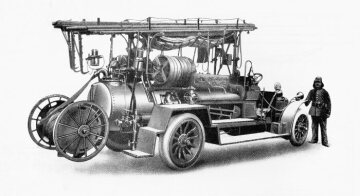1906
Download
Please wait a moment ...
Download
Please wait a moment ...
Delete
Do you really want to delete the data record?
Download
Please wait a moment ...
Download
Please wait a moment ...
Download
Please wait a moment ...
Crop for shopping cart
Please wait a moment ...
Set as main picture
Do you want to set this media object as main picture?

-
May 1906
-
In Untertürkheim, work is completed on the Mercedes six-cylinder racing car designed by Wilhelm Maybach. In early August the new 120 hp / 88 kW design proves itself in extended trials on the Semmering and Ardennes race circuits. However, a cracked cylinder head prevents the car from lining up for the Ardennes Race on 13 August.


-
July 1906
-
In Paris, two companies are established in which Emil Jellinek and DMG each hold a stake. Société des Automobiles Commerciales, around 55 % of which is owned by DMG, acquires the Wiener Neustadt plant site and manufacturing licences for France, Austria-Hungary and the Balkans from DMG. Jellinek, meanwhile, is the driving force behind the creation of Société Mercédès Électrique, in which DMG takes an 8.5 % holding. The new company is set up to start production of electric-powered vehicles based on the Lohner-Porsche system. Following the sale of the Wiener Neustadt factory, Österreichische Daimler-Motoren-Gesellschaft is converted into a limited-liability company. Ferdinand Porsche takes over the reins as chief engineer, having developed the hub drive system seven years earlier at Jacob Lohner & Co.

-
23 September 1906
-
In the eigth Semmering Race Hermann Braun, driving a 100 hp Mercedes racing car owned by Theodor Dreher, sets a new course record with an average speed of 77 km/h. This is Braun's fourth consecutive victory in this top-class Austrian hillclimb. Dreher, whose car takes victory for the third time, becomes the eventual winner of the Challenge Trophy, which he himself had endowed.

-
September 1906
-
Deutsche Mercedes-Verkaufsgesellschaft GmbH is established in Frankfurt am Main to handle the increasingly important domestic sales sector. Flinsch & Co. in Frankfurt am Main, previously the German general distributor, Mercédès Société Francaise d'Automobiles, Paris, and Continental Caoutchouc & Gutta-Percha-Compagnie in Hanoer all hold equal stakes in the new company. At the end of 1907, Daimler-Motoren-Gesellschaft takes over shares held by Flinsch and Continental.








Loading








